Track Landscaping
Tribute Site |
|
|
|
Instead of trying to exactly duplicate an actual raceway, it's easier to select just a few key elements found at most raceways. A pit row and garage complex are often enough to suggest a realistic working raceway. A garage complex also provides a setting for showcasing your favorite slot cars. |
| Track Design and Mounting |
|
Once a sturdy table has been built the track itself can be mounted. For this layout I choose to glue all of the track section joints and then solder the metal power rails for a smooth running, continuous rail track. |
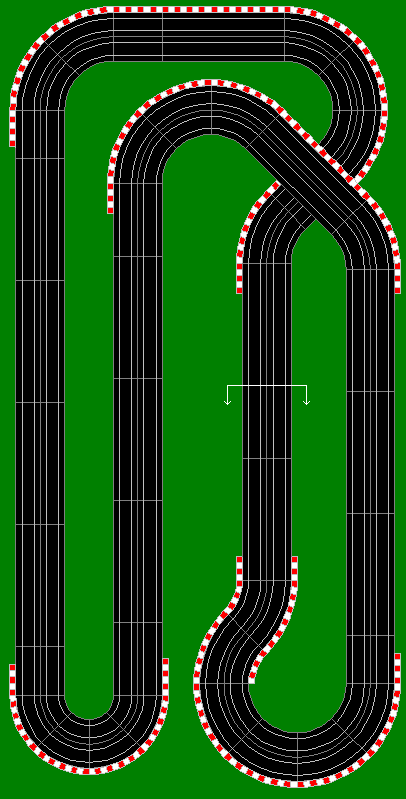
|
|
|
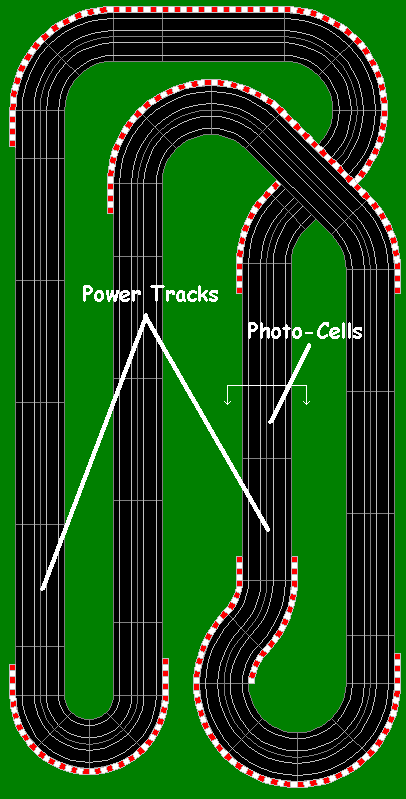
|
|
|
|
|
|
I started with a Tomy AFX Super International Race Set and then added the extra track required to build this layout. Unless you already have a good inventory of Tomy AFX track on hand this is the most economical way of getting all of the track needed, and you get four (4) Formula 1/IndyCar Tomy AFX Super G+Plus slot cars in the bargain. If your tastes run more towards Le Mans GTP sportscars then purchase the Tomy AFX 4-Way Split Race Set instead. |
| Track Joints |
|
With a raceway layout decided upon, the first task involves gluing and soldering the metal power rails. I like to assemble entire sections of the raceway on my workbench. I start by building the turns and straights as separate sections and then do the final assembly on the table. |
|
The metal power rails can easily be soldered if you apply a dab of soldering flux to the rail joints before attempting to solder them. I use Soldering Flux Paste to prepare the rails for soldering. You must use soldering flux, attempting to solder bare metal rails without first applying flux will lead to many problems. |
|
At this point you should have a complete 2-lane turn or straight assembly that is ready to be cleaned and sanded. I use Formula 409 Degreaser and Cleaner sprayed on a lint-free rag to clean the remaining flux from the track surface. |

|
|
|
| Track Geometry |
|
Anyone who has ever built and mounted a Tomy AFX 4-lane raceway will tell you that the inner and outer 2-lane plastic track sections do not fit together properly. While Tomy AFX track sections are designed to nest inside of one another to create 4, 6 and 8-lane raceways, there is actually a 1/8" gap between the 2-lane track sections. |
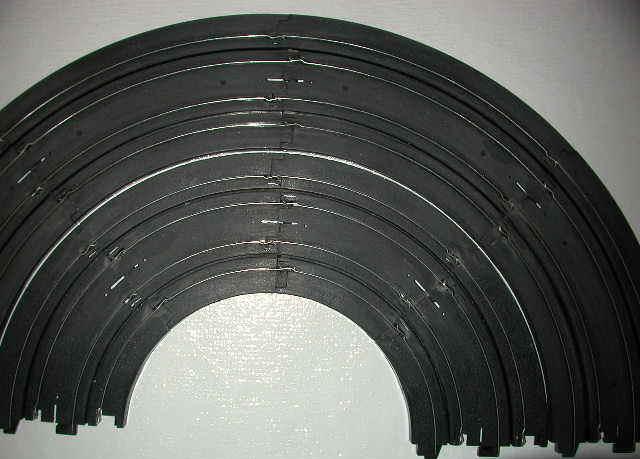
|
|
|
| Track Elevation |
|
Once all of the track sections have been joined on the table it's time to actually fasten them to the tabletop. Use 1 Inch No. 3 Flathead Wood Screws in countersunk mounting holes as described in the Construction section. Fasten all track sections to the tabletop, except for those that will be elevated. |
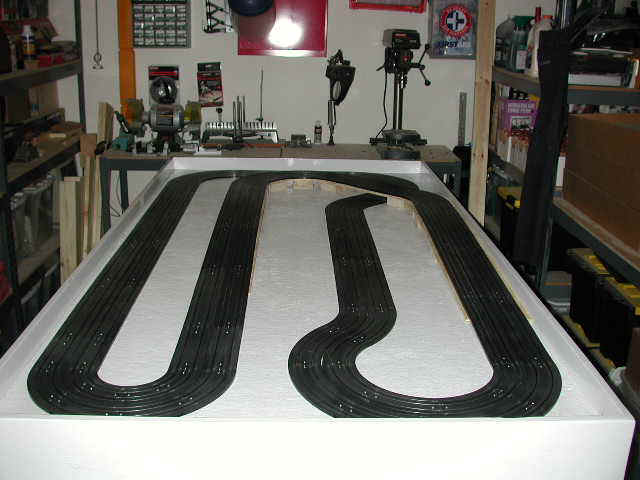
|
|
|
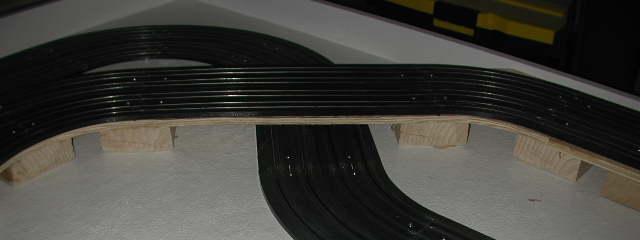
|
|
|

|
|
|
| Retaining Walls |
|
The sides of the evaluated portion of the track can now be enclosed to hide the plywood bridge and its supports. Vinyl 4" Cove Molding works well for this. It can be easily formed to follow the contour of the evaluated track section and can be cut with a simple pair of scissors. Vinyl molding is available in 4 foot sections or as continuous 20 feet rolls. Purchase Cove Molding that does NOT have pre-applied adhesive. |

|
|
|
|
Listed below are the lumber, fasteners and supplies needed to secure the track to the tabletop and to build the elevated bridge section for this layout. |
|
|
|
|
| Painting the Track Surface |
|
The next phase of construction involves filling the gap between the 2-lane track sections described earlier, as well as the track mounting screws. I also filled the small openings in the track near the joints. |
|
I tried glossy and satin finish paints first but they did not look very attractive and were too slick for rubber and silicone tires. The Rustoleum Flat Back Enamel that I ultimately used created a track surface that was very realistic looking and provided excellent traction. The flat black surface looks just like real tarmac. |
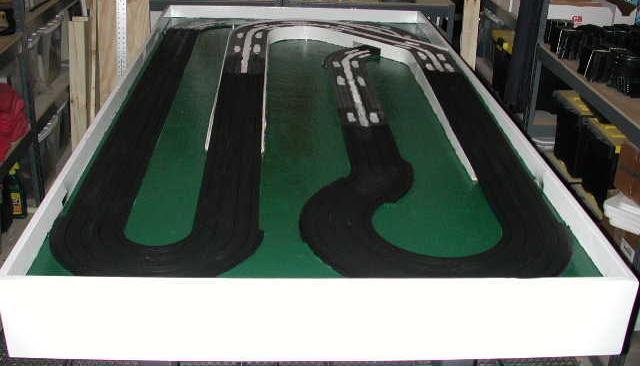
|
|
|
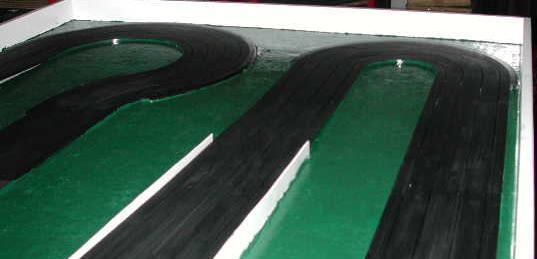
|
|
|
| Painting the Track Aprons |
|
The picture below illustrates FISA curb striping applied to the outside of a turn. After applying my HO Track Borders the aprons were painted white. When the white paint had dried 3M ½" Blue Painters Tape was applied to create an alternating pattern. The exposed areas were then painted red. |

|
|
|
| FISA Track Apron Tape |
|
The picture below illustrates my HO Turn Borders with FISA Curbing Tape applied instead of painting them. The FISA Curb Tape Kit includes White Vinyl Tape that is applied directly to the Turn Borders. The kit also includes ½" Square Die-Cut Red Stripes that are applied at ½" intervals to create a FISA-style apron at the outside of each turn. |

|
|
|

|
|
|
|
|
| . . . More to Come . . . |
|
|

|